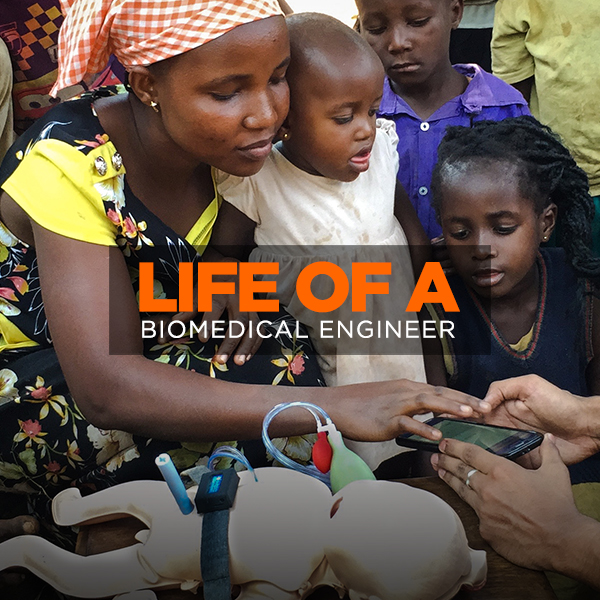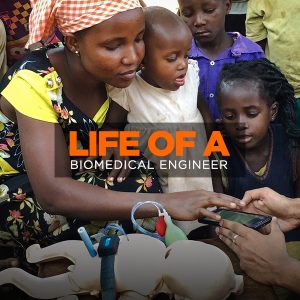
Life of a Biomedical Engineer

Biomedical engineering is a branch of engineering which is the application of the principles and problem-solving techniques of engineering to life sciences.
Who is a Biomedical Engineer?
A person who analyzes and designs solutions to problems in biology and medicine by applying technological advancements by use of continuous research and development. The ultimate goal of a biomedical engineer is to improve the quality and effectiveness of health care routine of a patient.
A biomedical engineer may working any of the following industries: manufacturing, educational institutions, hospitals, research facilities of pharma companies and medical institutions, teaching, and government regulatory agencies.
What does a biomedical engineer do?
A biomedical engineer primarily designs biomedical equipment like artificial organs and machines for diagnosis, treatment through surgery or non-invasive techniques of medical issues. He/she is also responsible for installation, maintenance repair and adjustment of various biomedical equipment. His duties also include evaluation of efficiency and safety of these equipment. He/she also conducts training for the clinicians for proper usage of biomedical equipment. A biomedical engineer plays a vital role in research of various aspects of the biological systems of humans and animals with life scientists, chemists, and medical scientists. Besides, he/she also prepares technical reports, research papers, procedures.
Areas of specialization for a biomedical engineer:
Biomaterials
Biomaterial by definition means a natural or synthetic material (as a polymer or metal) that is suitable for introduction into living tissue especially as part of a medical device (as an artificial heart valve or joint).
Bioinstrumentation
Bioinstrumentation deals with the development and usage of instruments for the purpose of recording and transmitting physiological data for the diagnosis and treatment of diseases
Biomechanics
Biomechanics is the study of mechanics related to biology especially musculoskeletal activity. It also includes the study of motion, material deformation, fluid flow within the human body and transport of chemical constituents across biological systems.
Clinical engineering
Clinical engineering is a branch of biomedical engineering that is responsible for application and implementation of medical technology with a goal to optimize healthcare delivery.
System Physiology
System Physiology majorly is a branch of biomedical engineering which deals with various strategies, methodologies, tools which are used to acquire a complete understanding of functionalities of living organisms.
Medical Imaging
Medical imaging is the visualization of body parts, tissues, or organs, for use in clinical diagnosis, treatment and disease monitoring.
Rehabilitation Engineering
Rehabilitation engineering is one of the many applications of engineering sciences to design and develop technological solutions to problems confronted by individuals with disabilities.
Tissue Engineering
Tissue Engineering involves creation of tissues and materials to replace flawed body functionality
Neural Engineering
Neural Engineering is the interaction of nervous system with any artificial medical devices
Computational Modeling
Computational modeling is nothing but the use of computers to simulate and study the behavior of complex systems using mathematics, physics and computer science.It uses various computational simulations to come up with qualitative along with quantitative data for developing efficient medical devices
With a constant demand and growth in the medical industry and life sciences at the fore, the demand for biomedical sciences is on the rise. The most effective medical responses and treatments are always just a little more advancement away and so biomedical engineering is one of the key fields with immense scope. If you think you are a student with fascination for life sciences and technology alike, use this field to grow.



